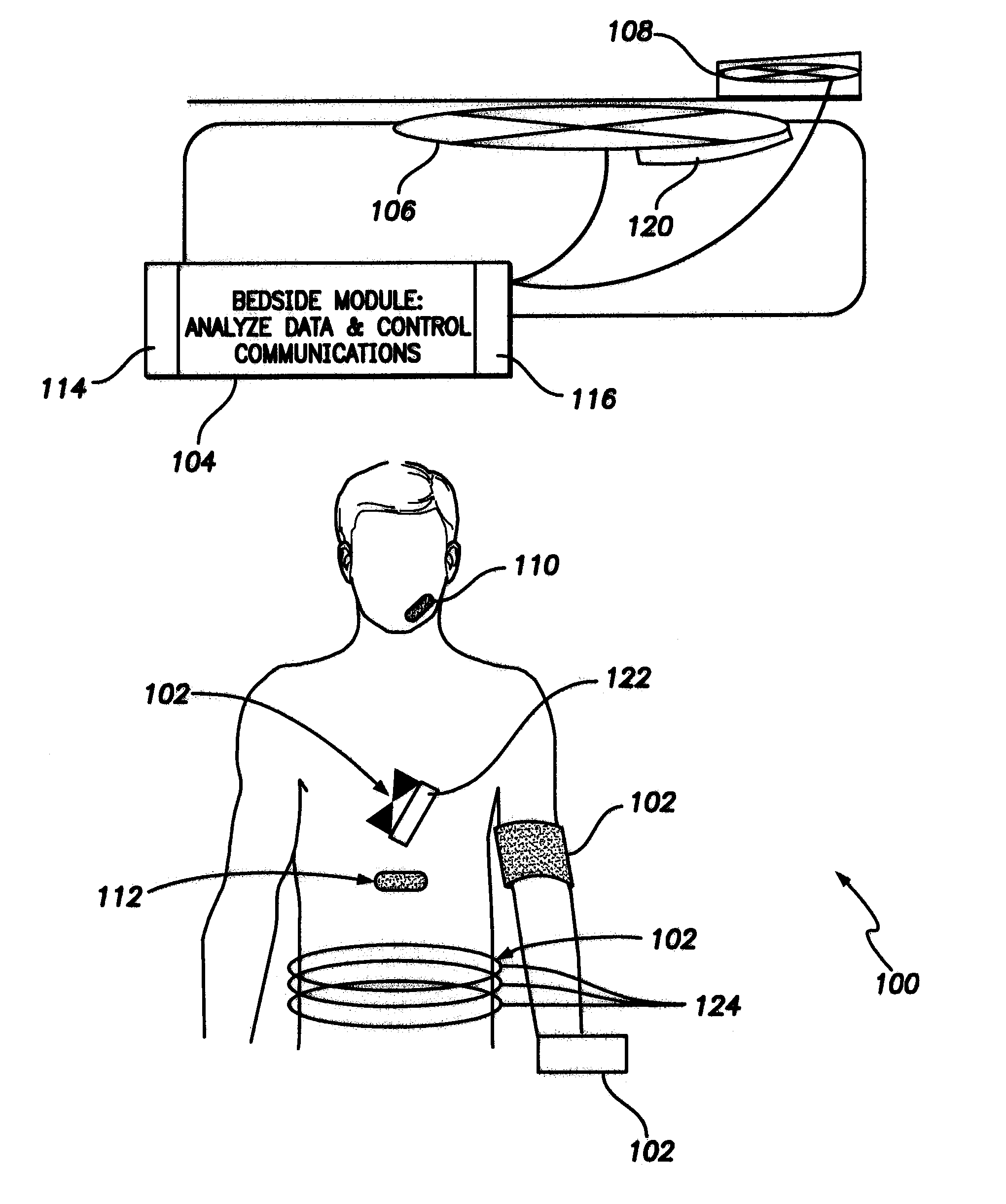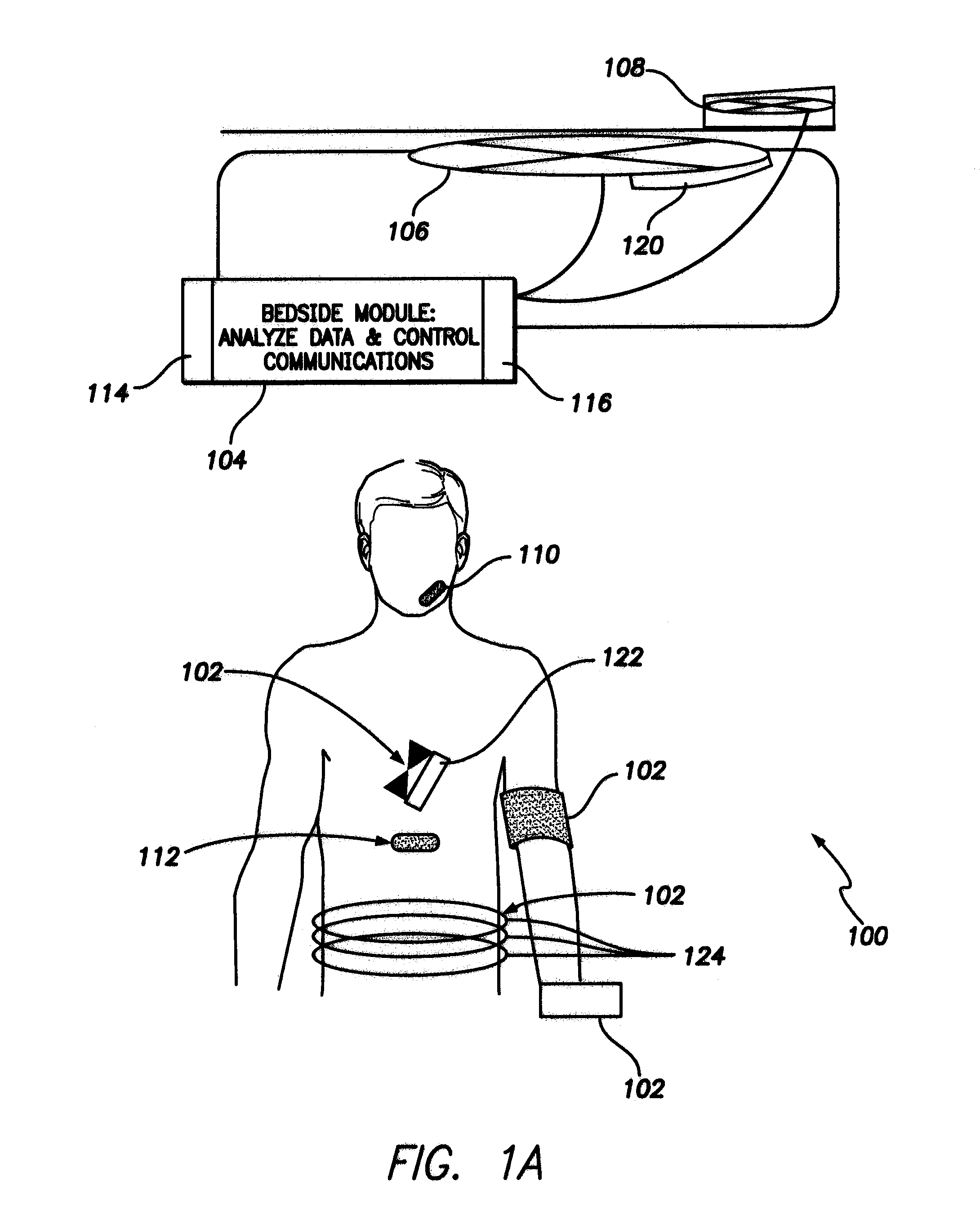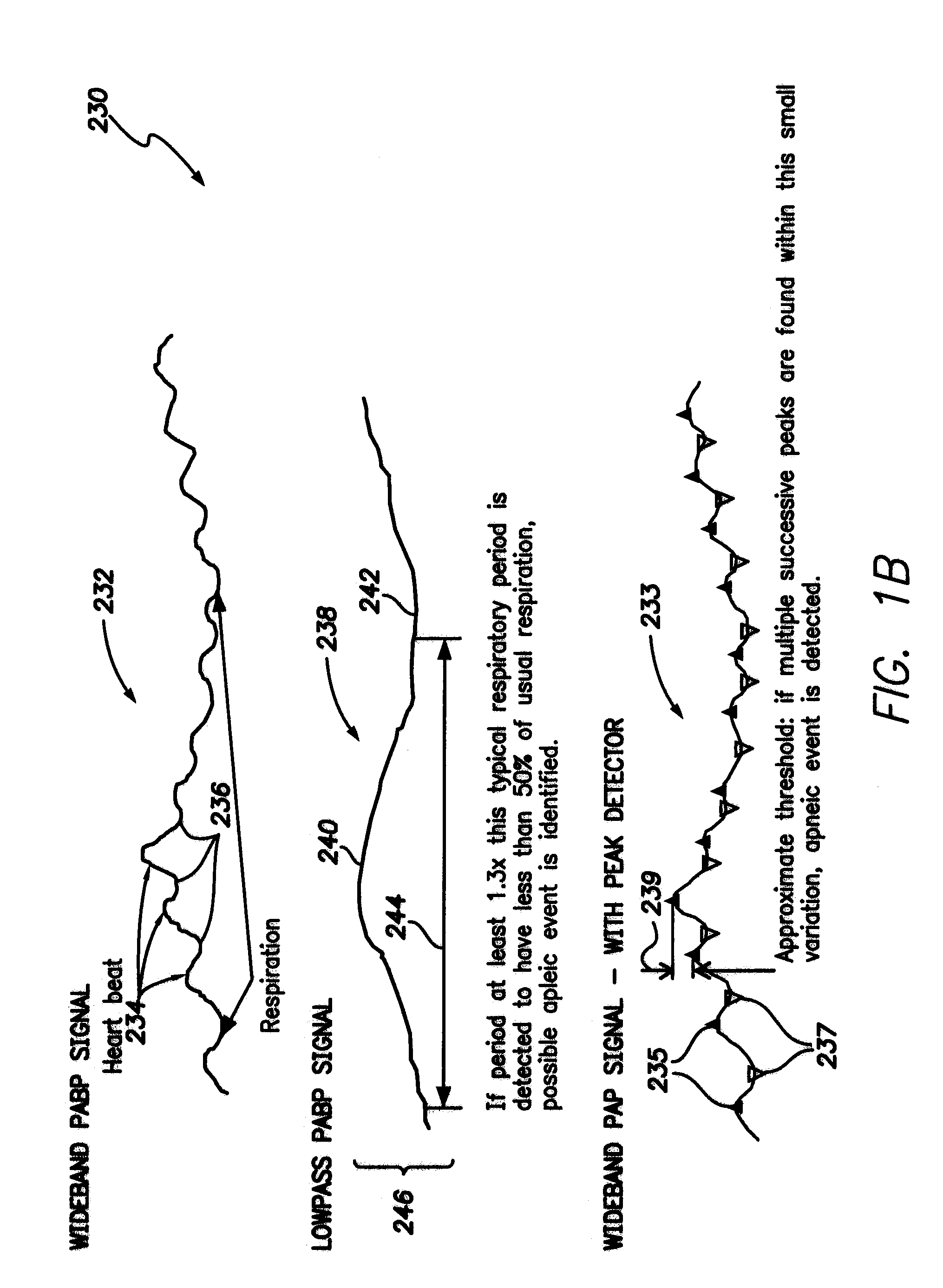Wireless closed-loop and system to detect and treat sleep apnea
a closed-loop, sleep apnea technology, applied in the field of methods and systems for treating sleep apnea, can solve the problems of increased risk of poor outcomes, adverse effects on quality of life and overall health, and large inconvenience for patients and their partners
- Summary
- Abstract
- Description
- Claims
- Application Information
AI Technical Summary
Benefits of technology
Problems solved by technology
Method used
Image
Examples
Embodiment Construction
System Overview
[0028]FIG. 1 illustrates a system 100 for detecting and treating sleep apnea. The system 100 includes one or more sensors 102 that are configured to be implanted into the patient or placed against or proximate the patient's skin.
[0029]The system 100 includes one or more stimulation devices 110 and 112, one or more of which may represent an implantable device. One or more of the devices 110 and 112 are configured to deliver central sleep apnea (CSA) therapy when a CSA state is declared and / or an obstructive sleep apnea (OSA) therapy when an OSA state is declared. Optionally, the stimulation devices 110, 112 may include an implantable device having a lead positioned proximate to nerves or muscles of interest. The lead has one or more electrodes that are configured to deliver at least one of a nerve stimulation or a muscle stimulation that is configured to induce breathing. The stimulation devices 110, 112 may be implemented through a “capsule” that receives energy or po...
PUM
 Login to View More
Login to View More Abstract
Description
Claims
Application Information
 Login to View More
Login to View More - R&D
- Intellectual Property
- Life Sciences
- Materials
- Tech Scout
- Unparalleled Data Quality
- Higher Quality Content
- 60% Fewer Hallucinations
Browse by: Latest US Patents, China's latest patents, Technical Efficacy Thesaurus, Application Domain, Technology Topic, Popular Technical Reports.
© 2025 PatSnap. All rights reserved.Legal|Privacy policy|Modern Slavery Act Transparency Statement|Sitemap|About US| Contact US: help@patsnap.com



